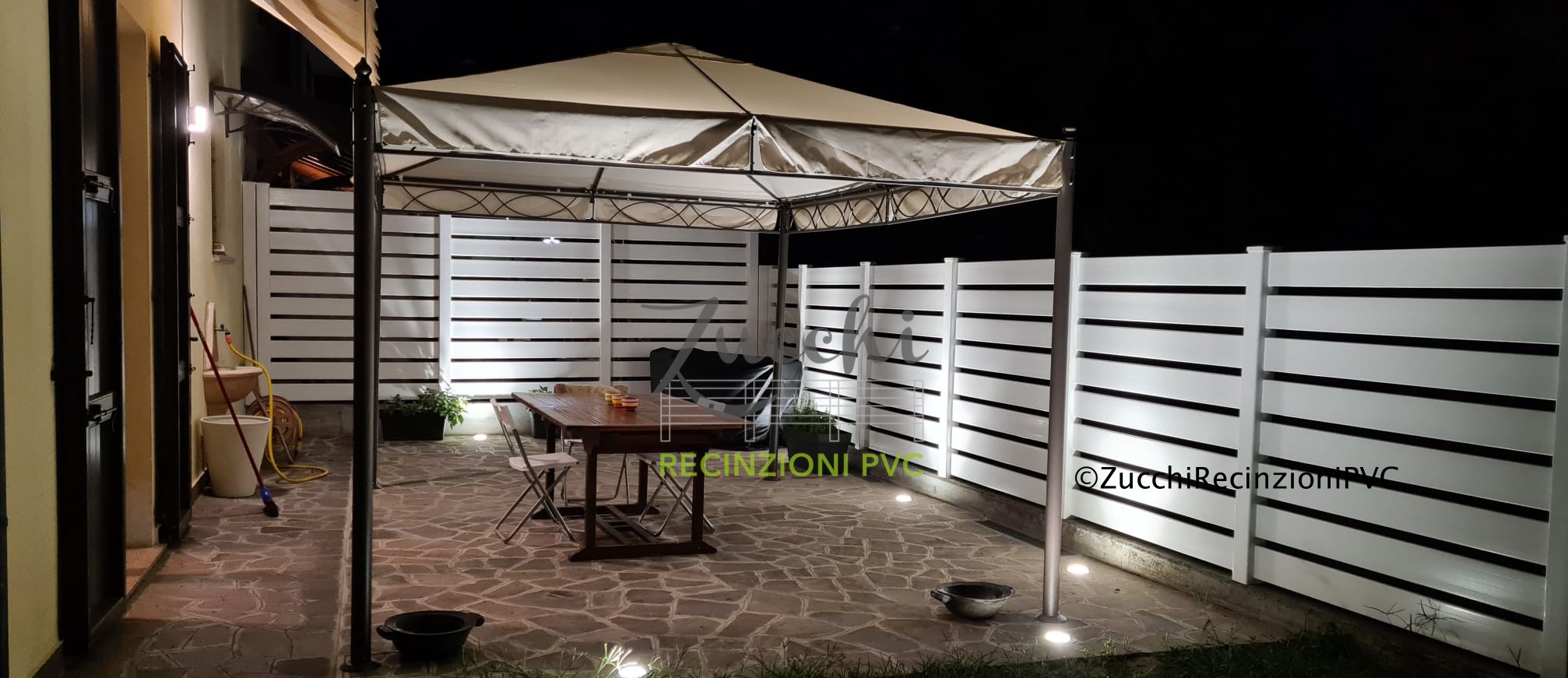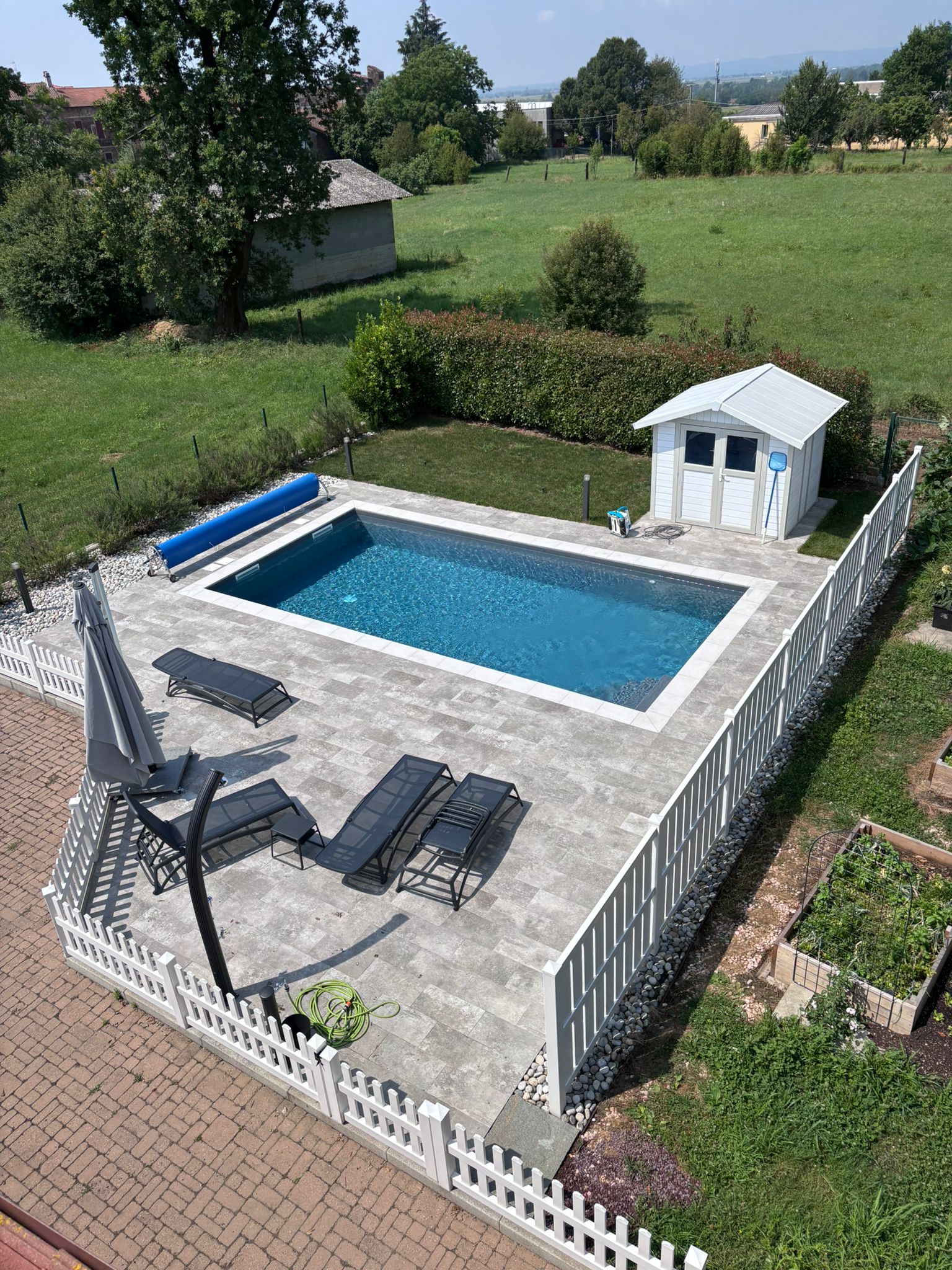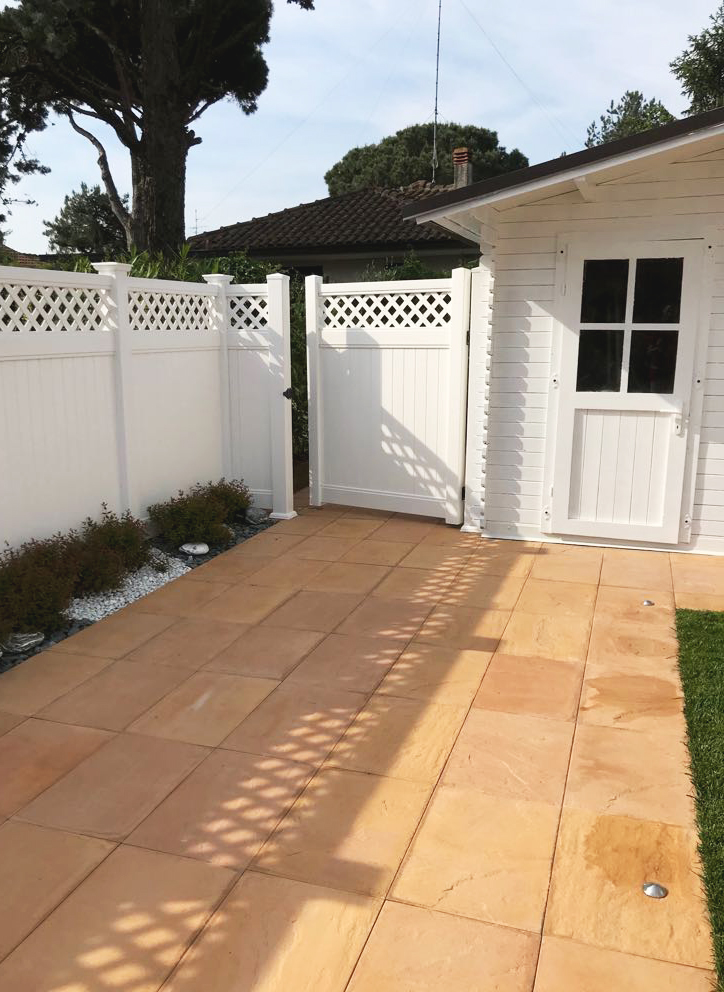Plants suitable for tall and low fences: how to choose the right variety for your garden
If you have a PVC fence, whether tall or low, and want to add a touch of greenery to your outdoor space, climbing plants are the perfect solution. But how do you choose the right ones for a setup that suits your garden and the size of your fence? Don’t worry — I’ll guide you through this little green journey, revealing some of the best plants for both tall and low fences, tailored to different needs. Whether you want to hide your fence or simply decorate it, choosing the right plants can truly make all the difference!Climbing plants for low fences: the perfect touch of elegance
If your fence is low, maybe no more than one or two meters high, don’t worry! There are plenty of climbing plants that are perfect for this type of structure. The key to a good choice is to go for varieties that grow compactly and don’t require a heavy-duty support. The ideal plants for low fences are those that grow densely, creating a true “green barrier” that adds beauty without taking up too much space. One of the most popular options for low fences is Jasmine. This climbing plant is known for its fragrant flowers and fast growth. Ideal for beautifying a low fence, jasmine is perfect if you’re looking for a colorful and aromatic garden. Plus, it doesn’t require much space and grows fairly quickly, so you’ll soon be surprised by its beauty. Another great plant for low fences is Clematis. With its vibrant flowers, clematis can be an excellent choice if you want a fence full of liveliness. Clematis also adapts well to smaller gardens and grows beautifully on a low fence, creating a vertical effect that doesn’t require too much effort. A little pruning is all it takes to keep it neat and lush.Climbing plants for tall fences: a touch of privacy and greenery
If your fence is tall, you’ll likely need plants that can cover a larger surface and grow vertically, creating a true green barrier that hides the surrounding space. Climbing plants for tall fences need to be able to climb to the top, perhaps even surpassing the fence itself, and provide a natural effect of protection and privacy. An excellent choice for this type of fence is Ivy. This climbing plant is perfect for tall fences as it grows quickly and easily attaches to PVC, thanks to its ability to develop aerial roots. Ivy is ideal if you’re looking for dense and continuous coverage. Moreover, this plant is hardy, adaptable, and can even grow in shady areas, making it perfect if your fence is exposed to little sunlight. If you prefer a plant that adds a bit of color to your garden, Passionflower could be the perfect choice for you. With its exotic and spectacular flowers, passionflower will grow tall, winding around your fence and creating a visual display that won’t go unnoticed. Moreover, it’s quite a hardy plant and can tolerate various climatic conditions, making it an excellent choice for those looking for a plant with minimal fuss.How to choose the right plant based on your garden’s needs
Choosing the right climbing plants for your fence depends on several factors: fence height, sun exposure, and the type of effect you want to achieve. If your fence is exposed to sunlight for most of the day, then plants like passionflower, which loves the sun, are ideal. On the other hand, if you have a shadier area, ivy is perfect as it grows well even in low light conditions. Another important factor to consider is maintenance. If you’re a beginner gardener or don’t have much time to dedicate to plant care, it’s best to choose varieties that require little maintenance. In this case, ivy is the best option, as once it’s established on the fence, it will grow on its own with minimal attention. Finally, don’t forget that climbing plants, when well cared for, can transform your garden, adding not only beauty but also privacy and protection. Imagine sitting in your garden corner, surrounded by beautiful greenery that hides the outside world: a small oasis of tranquility, made possible by your climbing plants!Differences in growth between climbing plants on PVC and wood: what to know to choose the right material
When it comes to planting climbing plants in your garden, the choice of fence for them to grow on is crucial. Two of the most common materials for fences are PVC and wood, but there is a significant difference in how climbing plants behave on each of these supports. If you’re looking to beautify your fence with green and flowering plants, it’s essential to understand these differences to achieve the best results. In this article, I will explain everything you need to know about the growth differences between climbing plants on PVC and wood, so you can make the right choice for your garden.PVC vs Wood: the ideal support for climbing plants
PVC fences are becoming increasingly popular due to their durability and low maintenance. However, if you’re thinking of using a PVC fence to grow climbing plants, it’s important to know that this material has different characteristics compared to wood. PVC, being smooth and non-porous, doesn’t provide the same kind of natural support that wood does. Climbing plants rely on aerial roots or tendrils to grip surfaces. While some plants, like ivy, may adhere well to PVC, others might find it difficult to thrive on this material. On the other hand, wood provides a rough surface that allows plants to easily cling to it. Climbing plants tend to develop better on wood because the aerial roots can penetrate it, and the irregularity of the surface offers more support for growth. If you’re looking for a support that encourages fast and healthy growth of climbing plants, wood might be the best choice. However, it’s important to consider that wood requires periodic maintenance to prevent damage such as rot or discoloration caused by moisture.The growth speed of climbing plants on PVC compared to wood
When you plant climbing plants on a fence, one of the things you’ll probably want to know is how quickly they will grow. The growth speed largely depends on the material the plants are planted on. On wooden supports, climbing plants tend to grow faster compared to those on PVC. This is because wood allows for greater interaction between the aerial roots and the surface, making it easier for the plants to develop. On PVC panels, however, growth may be a bit slower. Since PVC is a smoother and less grippy surface, plants may take longer to firmly cling to it. Some climbing plants may struggle to establish themselves properly, slowing down their growth. Certain types of climbers, such as wisteria or passionflower, may require additional support structures to grow quickly on a PVC fence. For the best results, it’s important to choose climbing plants that are suited to these conditions.Maintenance and durability: which material lasts better over time?
Another important aspect to consider when planting climbing plants on PVC or wood fences is maintenance. Wood, while being a natural and aesthetically pleasing material, requires regular upkeep. Each year, wood should be treated with paints or preservatives to protect it from moisture, weather conditions, and insect damage. If not properly treated, wood can rot and deteriorate over time, which can also affect the growth of climbing plants. On the other hand, PVC is much more resistant to weather conditions. It doesn’t rot, deteriorate, and doesn’t require periodic treatments to withstand the test of time. If you decide to plant climbing plants on a PVC fence, maintenance will be minimal. However, since PVC is not a natural material, you may need to watch out for dirt and moss buildup, which can hinder plant growth if not removed. Overall, if you prefer a low-maintenance option, PVC is definitely the best choice, but if you’re willing to invest some time, wood can offer unmatched beauty.The longevity of climbing plants: more durability with wood?
When it comes to longevity, climbing plants that grow on wooden fences tend to have a longer life compared to those growing on PVC. This is because wood provides a more natural and suitable support for the long-term growth of plants. If properly treated, wood can last for decades, while plants on a PVC fence may not thrive as well in the long run. Even though PVC is durable, the inability of plants to properly “cling” to the surface may reduce their lifespan and the quality of their growth over time. That said, if you choose to use PVC for your fence, you may need to install additional supports, such as trellises or wires, to facilitate plant growth. This small extra investment will help ensure greater longevity and healthier growth over time, even though the PVC fence is not naturally conducive to supporting plants.Personalizing your garden with plant varieties: the secret to a unique green corner
Have you ever dreamed of turning your garden into a personal oasis, where every corner reflects your style? The key to creating a truly unique garden is choosing the right plants—those that not only beautify the space but also express your personality. If you’re wondering how to do this, you’re in the right place. Personalizing your garden with a variety of plants is an easy way to add color, texture, and even fragrances that will make your green corner a special place. Discover how to make your garden as charming and welcoming as possible!Varieties of plants to add color and life to your garden
If you want your garden to transform into an explosion of colors, there’s nothing better than choosing a variety of plants that bloom in different seasons. Imagine having plants that flower in spring, others that bloom in summer, and why not, some that give you vibrant colors even in the fall. This combination of seasonal flowers will not only enrich the look of your garden, but it will also surprise you every time you look at it. For example, you could plant hibiscus and geraniums for a pop of color during the summer. These plants are perfect for creating colorful borders, and thanks to their hardiness, they require minimal care. In spring, on the other hand, tulips and daffodils will provide a warm welcome with their vibrant colors. And if you love fall, try planting chrysanthemums or asters, which will offer an incredible palette of colors even when the rest of the garden begins to bloom less. With this variety of plants, your garden will always be full of life, never becoming monotonous.Hedge plants to create a green and natural barrier
Another great way to personalize your garden is by using plants as natural barriers. If you’re looking for more privacy or simply a more defined boundary, hedge plants are the ideal solution. With a little care, you can create a lush, green hedge that separates your garden from the outside world while also providing a very pleasant decorative effect. Some of the most commonly used hedge plants include lavender, which, in addition to creating a fragrant barrier, adds a beautiful touch of purple, and laurel, evergreen and sturdy, perfect for forming tall and dense hedges. If you want a bit of color even in the colder months, Osmanthus is a plant that grows well as a hedge and, with its delicate flowers, scents the air, creating an enchanting atmosphere. Using hedge plants not only allows you to visually separate your garden from other areas but also gives your green space a more neat and tidy appearance.Climbing plants to add a touch of verticality
If your garden has little ground space but plenty of height, climbing plants are the perfect solution. By using trellises, fences, or walls, you can grow climbing plants, creating verticality and giving the illusion of a larger garden. Climbing plants are not only practical but also add a truly striking effect, transforming a simple structure into a living work of art. A classic climbing plant that must not be missing from your garden is ivy, perfect for covering walls and fences. It is hardy and grows quickly, creating a dense green cover. If you prefer more flowering plants, passionflower is an excellent choice. Its exotic flowers are spectacular and will make every corner of the garden unique. If you dream of a fragrant garden, don’t forget bignonia, which not only grows rapidly but also brings with it an irresistible fragrance, making every corner of the garden a sensory experience. Climbing plants allow you to make the most of the space without compromising on aesthetics.Aromatic plants for a garden that smells of freshness
If there’s one thing that can truly transform a garden, it’s the scent it emits. Adding aromatic plants to your garden will not only make the environment more pleasant but will also offer you the pleasure of using fresh herbs in your everyday cooking. Imagine having rosemary, sage, and thyme growing right in your garden. In addition to being easy to grow, these plants are perfect for adding a touch of elegance and freshness. Basil is perfect for a sunny corner, while mint and parsley adapt well to any type of soil. You can also plant lavender, not only for its delicate fragrance but also for its beauty, with its lilac flowers that attract butterflies and bees. If you want to make your garden even more special, create a small area dedicated to aromatic herbs. It will be not only functional but also a refreshing oasis to draw from when creating flavorful and aromatic dishes.How to create your personalized green corner
Now that you’ve discovered some of the most interesting plants to personalize your garden, it’s time to think about how to combine them. A well-designed garden is a mix of plants that complement each other. Choose plants that bloom in different seasons, offering varied colors, scents, and textures. Don’t forget to also consider the growth of each plant and its need for sunlight. For example, if you have a more shaded area, opt for plants that tolerate shade, like thistles or ferns. Adding a variety of plants to your garden doesn’t just mean planting different species. It also means creating an atmosphere that reflects your personality and taste. Whether you want a colorful garden, a fragrant one, or a perfect peaceful oasis, choosing the right plants will make all the difference. A personalized garden will give you moments of tranquility, beauty, and satisfaction every time you look at it. Don’t be afraid to be creative and experiment with different varieties. After all, your garden is an extension of yourself!Fixing Techniques for Optimal Growth: The Secret to Strong and Lush Climbing Plants
When you decide to grow climbing plants in your garden, one of the most important aspects is ensuring they grow the right way. Climbing plants need proper support to develop optimally, and choosing the right fixing technique can make the difference between a spectacular garden and one that struggles to thrive. In this guide, I’ll explore the best fixing techniques to ensure your climbing plants grow strong and lush. Ready to discover how to give the right support to your plants?Choosing the Right Support: Grids, Wires, or Hooks?
When it comes to climbing plants, the first step to achieving optimal growth is choosing the right support. Depending on the type of plant, there are various fixing options that will allow you to properly guide the growth of your plants. If you have a PVC or wooden fence, or perhaps a wall, you can choose grids, wires, or hooks to create the right support structure. Grids are one of the most common options for climbing plants. They are perfect for fast-growing plants that need a solid and stable support. You can attach a grid directly to the fence or wall, and let your plants naturally cling to the mesh. Metal or wooden grids are ideal because they provide a wide surface on which the plant’s aerial roots can easily anchor, creating an even and rapid coverage. Support wires are another great option, especially if you want a discreet and flexible support. They can be stretched horizontally between two points, such as between a wall and a fence, allowing climbing plants to easily ascend. This solution is very suitable for plants that don’t require a rigid support but simply need to be guided upward in an orderly way. If you have plants like passionflower or wisteria, the wires will help direct them along the correct growth path. Finally, hooks can be a practical solution if you want to give your plants individual support. You can attach hooks to the wall or fence and use them to hang more delicate plants, such as jasmine or ivy. Hooks allow easy access to the plants for maintenance and offer good flexibility, but they are ideal for plants that don’t require extensive support.Fixing and guiding growth: how to properly direct your plants.
Once you’ve chosen the type of support, the next step is to understand how to properly secure your plants for optimal growth. Guiding climbing plants is crucial to ensure they grow in the right direction and develop a strong structure. A common mistake is allowing the plants to grow haphazardly, without any guidance, which could compromise their beauty and health in the long run.To properly guide your climbing plants, start by securing the main stems to the grid, wires, or hooks. You can tie the young stems with soft twine or fabric strips to avoid damaging the plant. As the plant grows, continue to direct the longer stems towards the support so that they can develop without bending or breaking.
Climbing plants like wisteria or clematis can grow very quickly, so it’s important to help them grow evenly. If left unguided, these plants could grow haphazardly, creating a chaotic mass of branches. A good technique is to tie the main stem at regular intervals, ensuring that it grows straight and doesn’t bend too much. This will help the plant develop robustly, with better blooms and a tidier shape.
Maintenance and Adjustment of the Fixing: Ensure the Support is Always Stable
Climbing plants, as they grow, tend to become heavier. Therefore, maintaining the fixing is essential to keep the structure stable and secure. Supports like grids and wires can loosen over time, so it’s important to regularly check that they are properly tightened and that there are no weak points. If you notice that a grid or wire has loosened, make sure to adjust it immediately to prevent the plant from collapsing or getting damaged. Additionally, over time, climbing plants develop stronger aerial roots, and sometimes these can attach to the supports too aggressively. In this case, it’s helpful to carefully remove any roots that might compromise the structure of the support. Use garden scissors to gently cut the roots that are trying to penetrate too deeply into the support. This way, you can prevent the plant from damaging the grid or wires.Finally, when the plants reach the top of the fence or wall, you can choose to prune them to keep them in shape. Regular pruning helps maintain the plant’s health and encourages more vigorous growth. Remember, consistent maintenance will not only ensure optimal growth but also make your garden look more tidy and harmonious.







Leave A Comment